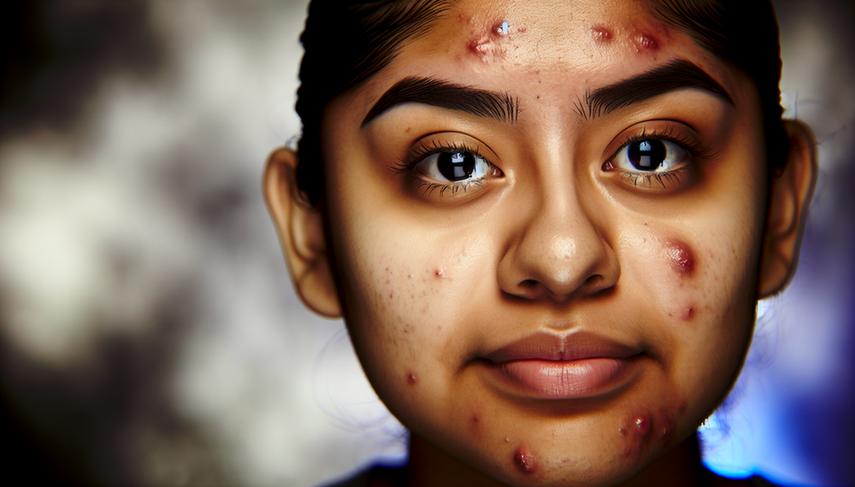Acne Diagnosis: Understanding Comedones, Inflammation, and Hyperandrogenism for Effective Rosacea Differentiation

Dear colleagues, the acne diagnosis is a task that requires a detailed understanding of the different types of lesions and the hormonal factors that can influence their appearance and severity. Acne is a common dermatological condition that affects a large portion of the population, especially during adolescence, but it can also persist or appear in adulthood, particularly in women.
Types of Lesions in Acne
Acne is characterized by a variety of lesions that include comedones (open and closed), papules, pustules, nodules, and cysts. Comedones, commonly known as blackheads and whiteheads, result from the obstruction of hair follicles. Papules and pustules are inflammatory lesions that can evolve into nodules and cysts in more severe cases. Inflammation plays a crucial role in the progression of these lesions, and its management is essential to prevent scarring and other complications.
An important aspect to consider is post-inflammatory hyperpigmentation, which can be a sequel of acne, especially in pigmented skin. This phenomenon is due to the interaction between keratinocytes and melanocytes and can be exacerbated by factors such as the keratinocyte growth factor [1].
Hormonal Factors and Differentiation from Rosacea
Hyperandrogenism is a key hormonal factor in the development of acne, especially in adult women. Androgens stimulate sebum production, which can lead to follicular obstruction and the formation of comedones. In this context, the use of spironolactone has shown to be a promising alternative to antibiotic treatment by blocking 5-alpha-reductase receptors in sebaceous glands [2].
It is crucial to differentiate acne from other dermatological conditions such as rosacea, which, although it may present with papules and pustules, is not associated with comedones. Rosacea also has a prominent vascular component, distinguishing it from acne.
Conclusions
The accurate diagnosis of acne and the identification of underlying hormonal factors are essential for effective management. Understanding the different types of lesions and their relationship with inflammation and hyperandrogenism can guide treatment and improve outcomes for patients. Furthermore, differentiation from other conditions such as rosacea is fundamental to avoid inappropriate treatments.
In summary, acne is a multifaceted condition that requires a comprehensive approach to its diagnosis and treatment, considering both clinical and hormonal aspects.
Referencias
- [1] Mechanisms underlying post-inflammatory hyperpigmentation: lessons from solar lentigo.
- [2] FASCE, the benefit of spironolactone for treating acne in women: study protocol for a randomized double-blind trial.
Created 5/1/2025
